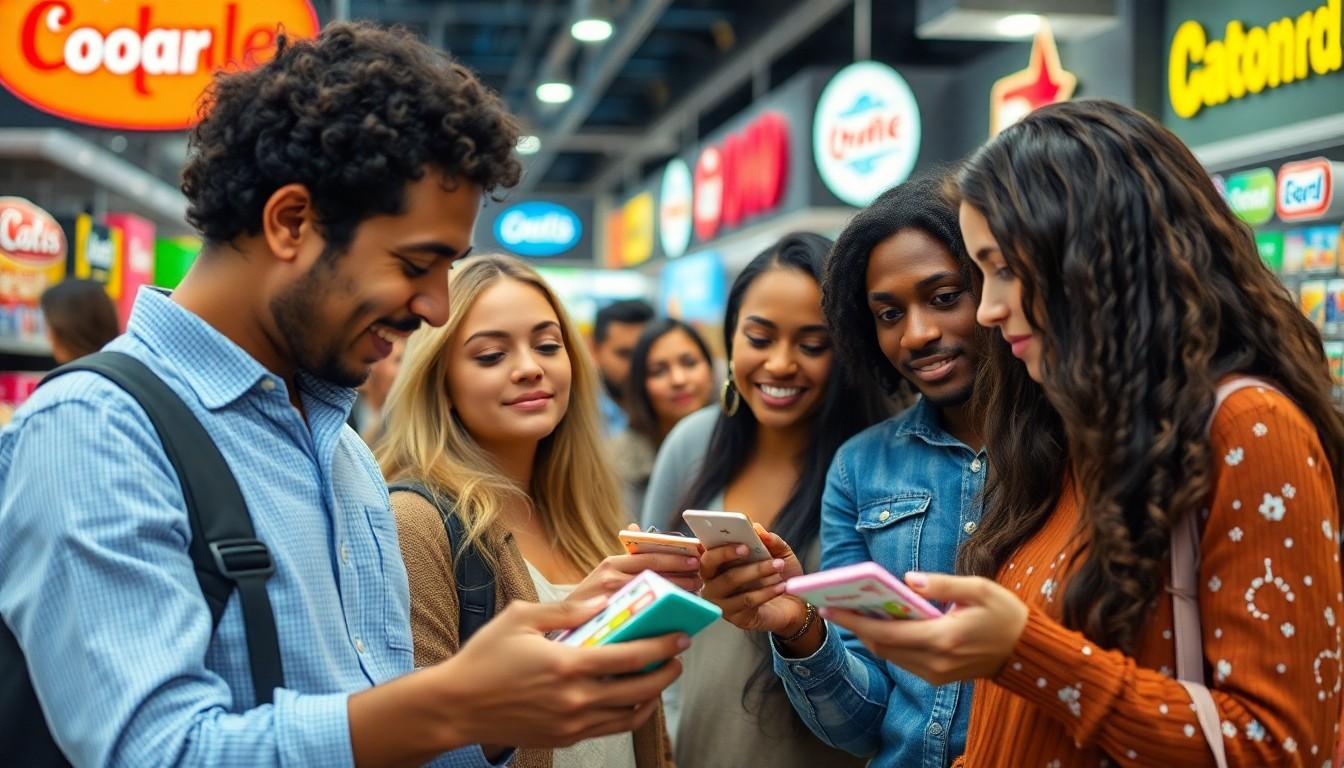Ever heard of the Jaizoxie effect? No? Well, buckle up because this quirky phenomenon is about to take your understanding of human behavior to a whole new level. Imagine a world where your everyday choices are influenced by a mysterious force that’s both fascinating and a little bit goofy. It sounds like something straight out of a sci-fi movie, but it’s real and it’s happening all around us.
The Jaizoxie effect dives deep into the psychology of decision-making, revealing how subtle cues can sway our choices without us even realizing it. Whether you’re choosing what to eat for lunch or deciding on your next big purchase, this effect plays a sneaky role. So get ready to discover the secrets behind your own decisions and maybe even share a laugh or two along the way. Who knew psychology could be this entertaining?
Overview of Jaizoxie Effect
Jaizoxie effect represents a unique psychological phenomenon that subtly alters human behavior. This effect highlights how small environmental cues significantly influence decisions. Examples of such cues include brand logos, colors, and even social media trends that lead individuals toward specific choices.
Research indicates that these subtle influences often operate below the level of conscious awareness, making them powerful drivers of behavior. Individuals may choose certain products or food items based on labeling, packaging, or even ambient sounds in a store. Behavioral scientists emphasize that awareness of these influences can lead to more informed decision-making.
Studies show that when consumers encounter visual or auditory stimuli, their preferences can shift without deliberate intention. For instance, a calming scent in a retail environment could encourage longer shopping durations, leading to increased spending. Additionally, the Jaizoxie effect often ties to social dynamics, where the behavior of peers influences personal decisions significantly.
Psychologists explain that understanding the Jaizoxie effect can enhance marketing strategies. Businesses harness this knowledge to design effective advertising campaigns that resonate with target audiences. By leveraging social proof or appealing visuals, brands can effectively sway consumer choices.
Recognizing the Jaizoxie effect not only aids businesses but also empowers individuals to navigate daily decisions more consciously. It allows people to become aware of external influences, encouraging more deliberate choices in various aspects of life. Understanding this phenomenon represents a step toward enhanced decision-making and better psychological insights.
Mechanism of Action

The Jaizoxie effect operates through various mechanisms, influencing decisions via biological and psychological pathways.
Biological Pathways
Neuroscience research reveals that environmental cues engage specific brain regions related to rewards. These cues cause the release of neurotransmitters like dopamine, which heighten pleasure. Research indicates that brand logos and colors can stimulate emotional responses, shaping consumer preferences. For instance, exposure to certain colors may create associations with trust and quality. Recognizing these patterns allows businesses to craft more effective marketing strategies, ensuring strong connections between products and emotional responses. Experiments show that individuals exposed to persuasive branding often demonstrate increased spending behavior, underscoring the impact of subconscious interactions on purchasing choices.
Psychological Impacts
Psychological factors deeply influence the Jaizoxie effect, particularly through social dynamics and environmental context. As peer behaviors shape individual choices, observed actions significantly affect decision-making processes. Individuals often conform to group norms when selecting products or services. Research emphasizes how subtle social signals, such as seeing friends choose a specific brand, can lead to similar preferences. Furthermore, the availability of certain options can create a sense of urgency, pushing individuals towards quicker buying decisions. Understanding these psychological influences can enhance consumer awareness, empowering people to make more deliberate and informed choices.
Applications of Jaizoxie Effect
Understanding the Jaizoxie effect opens up various applications across different domains. Its influence is significant in both therapeutic settings and daily life.
Therapeutic Uses
Therapists apply the Jaizoxie effect to improve patient outcomes. Many use environmental cues to foster positive emotional responses during therapy sessions. For instance, soothing colors and calming sounds create a safe space for discussion. These elements can encourage openness and promote healing. Research shows that integrating subtle cues into therapy enhances client engagement and compliance, leading to better mental health management. This approach emphasizes the connection between our surroundings and psychological well-being.
Effects in Daily Life
Individuals experience the Jaizoxie effect in multiple everyday decisions. Subtle cues in marketing shape shopping habits and preferences. Brands often use specific colors and logos to create trust and familiarity, prompting consumers to make purchases unconsciously. Friends’ choices can significantly influence what products they buy; seeing peers enjoy a particular brand often sways opinions. Additionally, environmental factors affect dining choices, where ambiance can enhance appetite and enjoyment. Recognizing these influences helps individuals make more deliberate and mindful decisions.
Current Research Findings
Current studies emphasize the influence of the Jaizoxie effect on consumer behavior and decision-making. Academic research reveals that branding elements like logos and color schemes significantly shape preferences even when individuals remain unaware of this impact. These findings indicate that subtle environmental cues provoke emotional responses, activating brain regions associated with rewards.
Research conducted at various universities shows a strong correlation between specific colors and consumer trust. In experiments, participants exposed to trustworthy hues exhibited heightened willingness to spend on products marketed in those shades. Additionally, observations of peer behavior have demonstrated the capacity to influence personal choices, leading to increased conformity in purchasing patterns.
Neuroscience plays a pivotal role in understanding how the Jaizoxie effect operates. Studies indicate that exposure to particular stimuli releases neurotransmitters, including dopamine, which amplify positive feelings associated with purchasing decisions. Exposure to social media trends often drives people to prefer items popular among their peers, further illustrating the poignant impact of group dynamics on individual behavior.
Moreover, therapists have begun utilizing findings related to the Jaizoxie effect in treatment settings. By manipulating environmental factors like lighting and sound, they enhance patient experiences and promote engagement during therapy sessions. Positive emotional responses to carefully curated surroundings facilitate better therapeutic outcomes.
Everyday shopping experiences consistently reveal the potency of the Jaizoxie effect in shaping habits. Marketing strategies that effectively leverage subtle cues encourage consumers to make impulsive purchases, often without conscious realization of their influences. Understanding these mechanisms equips individuals with the knowledge to make more mindful decisions in their daily lives.
Limitations and Considerations
Understanding the Jaizoxie effect involves recognizing its limitations. Not all environmental cues evoke the same responses across different individuals. Personal experiences and cultural backgrounds shape how cues are perceived, leading to variability in reactions. Research shows that demographic factors, such as age and gender, can influence susceptibility to the Jaizoxie effect.
Certain contexts might diminish the effect’s impact. For example, high-stress environments can overshadow subtle cues, making individuals less receptive to influences. Additionally, the effectiveness of marketing strategies relies heavily on alignment with consumer values. Strategies that ignore ethical considerations may backfire, causing distrust rather than fostering engagement.
Overreliance on the Jaizoxie effect in advertising raises ethical concerns. Manipulating consumer behavior without transparency risks potential backlash. Brands that exploit subtle cues for questionable purposes may face reputational damage.
Long-term effects of the Jaizoxie phenomenon warrant caution. Constant exposure to certain cues can lead to desensitization. When consumers become accustomed to specific stimuli, the effectiveness of those cues diminishes over time.
Moreover, research in this area is still evolving. Academic studies continue to refine understandings of the Jaizoxie effect’s mechanisms. Insights gained from novel research may offer deeper explanations or reveal new dimensions.
Lastly, individuals benefit from awareness of the Jaizoxie effect. Understanding these influences empowers consumers to make informed decisions. Engaging in mindful choose-making enhances awareness of external cues that may affect choices. Recognizing the impact of subtle cues leads to more deliberate actions in purchasing and decision-making processes.
Conclusion
The Jaizoxie effect reveals the intricate ways environmental cues shape human behavior and decision-making. By understanding these influences, individuals can become more aware of how subtle factors impact their choices. This awareness not only enhances personal decision-making but also empowers marketers to create strategies that resonate with consumers.
As the interplay between psychology and consumer behavior continues to evolve, recognizing the nuances of the Jaizoxie effect can lead to more informed and deliberate actions in everyday life. Embracing this knowledge fosters a deeper connection to the motivations behind choices, ultimately paving the way for more mindful consumption.

